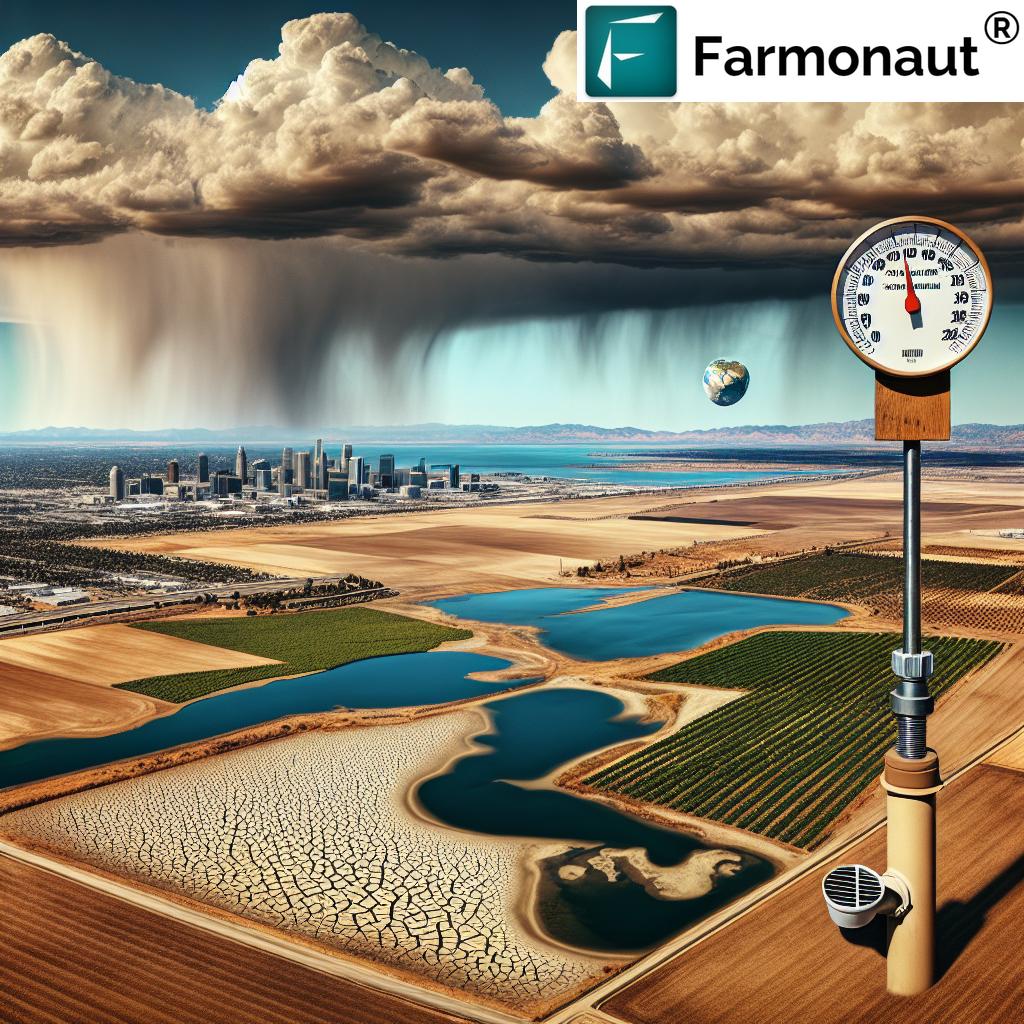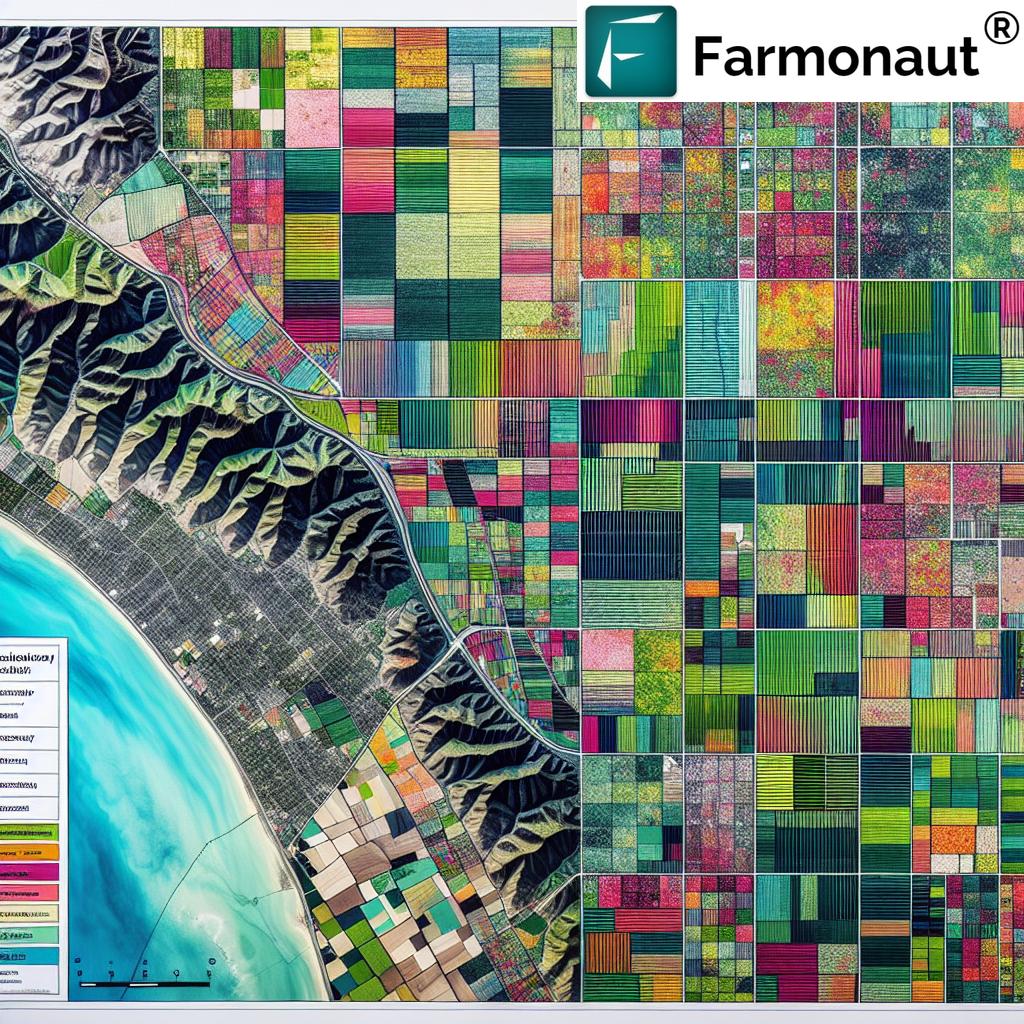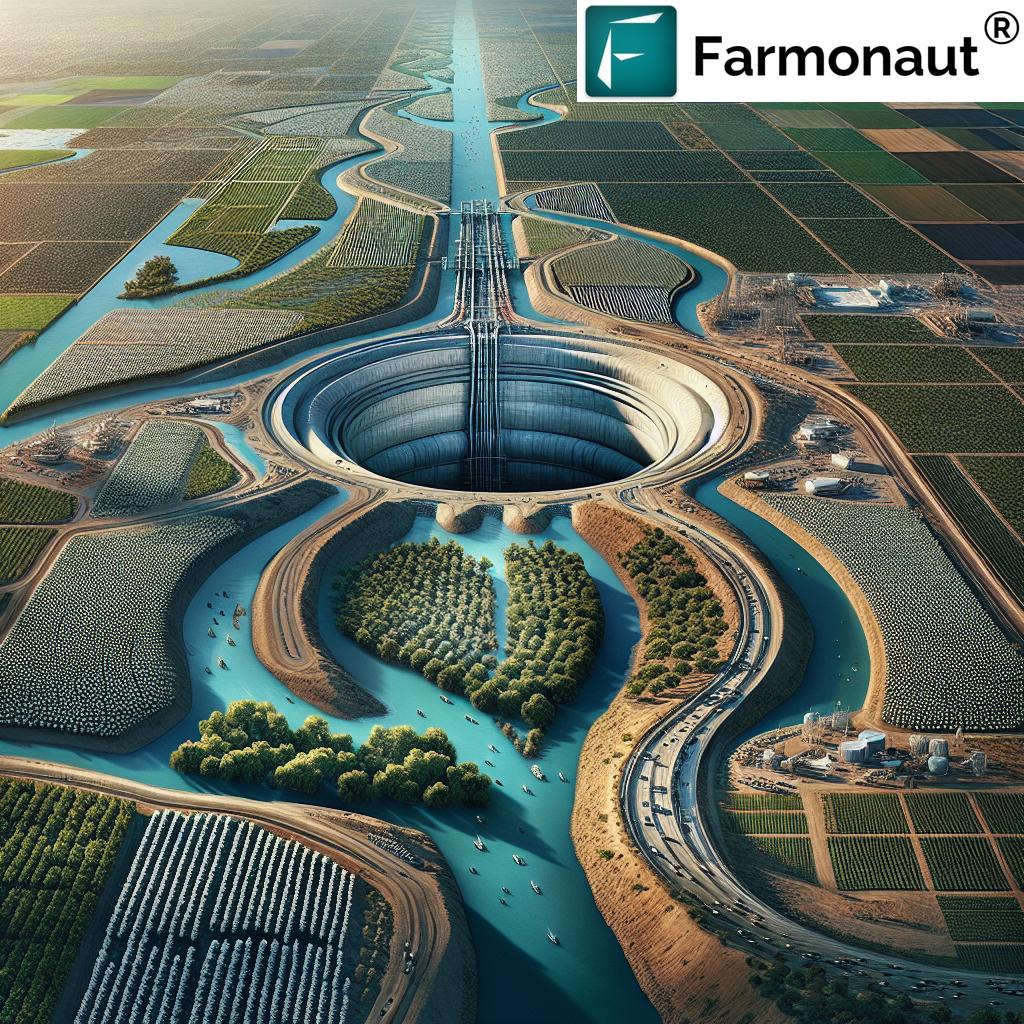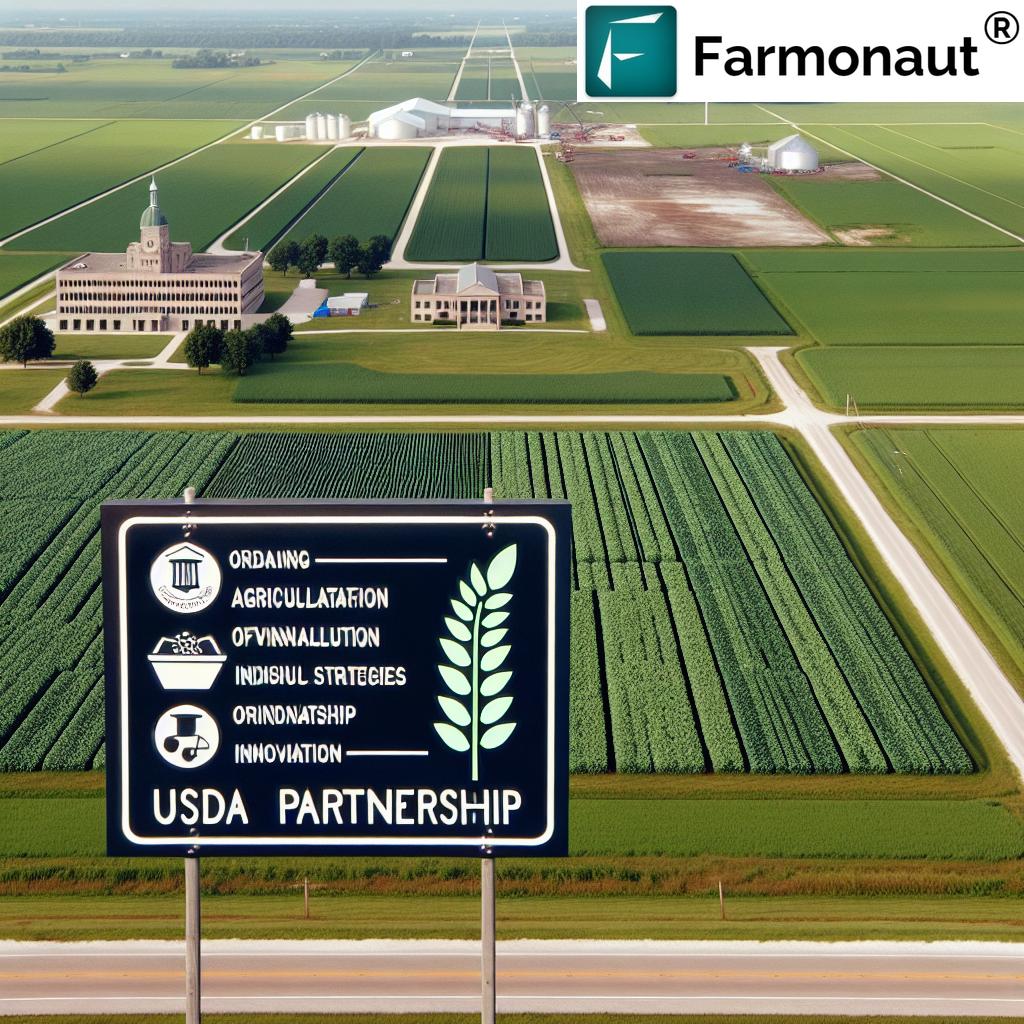Excavator Mulching Services: Bell Forestry & Cost Guide 2025
Published: 2025 | Focus Keyword: Excavator Mulching Services
“Excavator mulching can clear up to 15 acres per day, making it 60% faster than traditional land clearing methods.”
- Introduction: A New Era in Sustainable Forestry Mulching
- What is Forestry Mulching and Excavator Mulching Services?
- Comparison Table: Conventional Land Clearing vs. Excavator Mulching
- Advantages and Benefits of Forestry Mulching
- The Role of Bell Forestry Mulching Equipment
- Cost for Forestry Mulching: 2025 Comprehensive Guide
- Applications and Project Use Cases in 2025 & Beyond
- Environmental Sustainability: Mulching for a Healthier Planet
- How Farmonaut Empowers Sustainable Land Clearing & Management
- Key Resources & Apps for Forestry and Mulching Professionals
- Frequently Asked Questions
- Conclusion: The Future of Mulching, Land Clearing, and Environmental Management
Introduction: A New Era in Sustainable Forestry Mulching
As we move into 2025, excavator mulching services are revolutionizing how forestry professionals, contractors, and landowners approach land clearing, vegetation control, and wildfire risk reduction. With climate change amplifying the urgency for sustainable, efficient, and environmentally-responsible land management methods, modern mulching—particularly with Bell forestry mulching attachments and advanced excavators—has become an essential technique at the forefront of forestry and land development industries.
Learn more about regenerative agriculture, soil health, and climate-smart solutions in 2025 with this detailed video resource.
Forestry mulching is not just about clearing land. It embodies a holistic approach that combines efficiency, speed, and ecological sensitivity. Traditional clearing methods, which often involve multiple machines, soil disturbance, and significant debris, are giving way to innovative one-step processes powered by heavy-duty excavator mulchers. Our focus on sustainability, effective fuel reduction, and long-term site health makes mulching the go-to choice for forward-looking professionals and landowners.
What is Forestry Mulching and Excavator Mulching Services?
Forestry mulching is a land clearing process that utilizes heavy machinery equipped with specialized mulching attachments to shred trees, brush, stumps, and other vegetation into small pieces of natural mulch directly on-site. Unlike conventional methods that involve cutting, hauling away, and burning or disposing of debris, mulching grinds everything into fine, organic material—returning valuable nutrients to the soil and supporting ecosystem recovery.
Excavator mulching services specifically utilize excavators outfitted with powerful mulching heads. These attachments allow operators to precisely remove dense brush, saplings, and even mature trees with efficiency, even across varied terrains and challenging landscapes. The process involves:
- Using heavy machinery—typically excavators—fitted with specialized heads or blades
- Shredding vegetation: Trees, stumps, thick brush, and even invasive species are ground into up to 6-inch mulch pieces
- Returning organic matter directly to the soil—improving future vegetation growth
- Completing land clearing in a single pass, with no need for removing or hauling away debris
In 2025, excavator mulching services are becoming not only the standard for forestry and land management but also a crucial tool for sustainable development, wildfire risk reduction, and habitat restoration. The efficiency of these services saves time, reduces operational costs, and minimizes environmental disruption.
Discover innovative zero-waste tips and the benefits of mulch for both forestry and garden projects in 2025.
Comparison Table: Conventional Land Clearing vs. Excavator Mulching
Understanding the advantages of excavator mulching services becomes clearer when we compare them with traditional land clearing methods. The table below highlights differences in cost, environmental impact, wildfire risk reduction, and more for 2025.
| Method | Estimated Cost per Acre (USD, 2025) | Vegetation Control Effectiveness | Environmental Impact (Soil Disturbance, Carbon Footprint) |
Wildfire Risk Reduction | Suitability for Sensitive Areas |
|---|---|---|---|---|---|
| Excavator Mulching | $800–$1,500 | High (removes brush, stumps, saplings, trees) | Minimal – Reduces soil disturbance, returns organic material, lower carbon footprint |
Excellent – Removes up to 98% of ground fuel |
Ideal – Minimal damage, favors conservation |
| Traditional Bulldozing | $1,200–$2,200 | Moderate–High (removes most vegetation, but may leave roots) |
Significant – High soil disturbance, compaction, increased erosion risk, high carbon output |
Good – Reduces fuel but may leave debris piles |
Low – Soil damage, not suitable for conservation areas |
| Manual Clearing | $1,500–$3,000 | Low–Moderate (effective for light brush, not dense woods) |
Variable – May create localized soil disturbance, minimal equipment emissions |
Limited – Slow, less consistent reduction | Possible – For small, sensitive plots only |
Explore real-world wildfire risk reduction projects and AI satellite forestry solutions for 2025 and beyond.
Advantages and Benefits of Forestry Mulching
“Forestry mulching reduces wildfire risk by eliminating up to 98% of ground-level flammable vegetation.”
One of the key advantages of forestry mulching is its unparalleled environmental sustainability. By eliminating the need for multiple heavy machines, reducing soil disturbance, and recycling organic matter back into the ecosystem, mulching supports better soil health, water retention, and erosion control than traditional clearing methods. Let’s break down why this method has become essential and particularly relevant in 2025:
- Sustainability: Excavator mulching reduces disruption to soil and microbial life—promoting long-term ecosystem health.
- Efficiency and Speed: Clears up to 15 acres per day—ideal for rapid project timelines and tight deadlines.
- Cost Savings: Fewer machines and steps mean lower labor, fuel, and operational costs.
- Wildfire Mitigation: Removes dense underbrush and small trees that act as fuel, dramatically lowering fire risk.
- No Hauling or Burning: Eliminates logistics and pollution tied to debris removal or open burning.
- Improved Regrowth: Mulch enriches soil, helping desirable vegetation or habitat restoration.
- Minimal Erosion: Preserves roots and soil integrity, reducing runoff and erosion even on slopes.
- All-Terrain Capability: Excavators outfitted with mulching heads can perform on hills, wetlands, and rugged areas.
- Highly Targeted Applications: Precision removal allows for selective thinning, invasive species management, and habitat enhancement.
Compared to conventional methods that leave soil bare and vulnerable, forestry mulching ensures ongoing land health by retaining nutrients in the soil and supporting future vegetation regrowth. This makes it a preferred practice not just in heavy forestry projects, but also across urban interface, agriculture, mining reclamation, and infrastructure development.
Learn how satellite-based solutions like Farmonaut are transforming farm and resource management for sustainable results.
The Role of Bell Forestry Mulching Equipment
Bell forestry mulching solutions have rapidly gained traction as some of the most durable, efficient, and adaptable options on the global market. Known worldwide for robust construction, Bell’s line of excavators and articulated dump trucks provide a powerful platform for advanced mulching attachments—enabling landowners and contractors to achieve new standards in site preparation and vegetation control.
- Durability: Bell forestry mulching heads are built for challenging environments and high-volume projects—reducing wear and downtime.
- Power: Enables shredding of large trees, thick brush, stumps, and dense organic matter quickly and efficiently.
- Safety & Visibility: Operators benefit from enhanced cabin visibility and control, reducing project risks and improving precision.
- Compatibility: Attachments seamlessly integrate with Bell’s excavators and other branded equipment across forestry, mining, and reclamation settings.
- Single-Pass Efficiency: Many land clearing projects can be finished in one step—no need for additional equipment or return trips.
As a result, contractors and landowners utilizing Bell forestry mulching equipment find lower labor costs, faster project completion, and significantly fewer environmental impacts than traditional clearing. This revolutionizing approach not only supports compliance with 2025 sustainability targets but also increases profit margins and project capacity.
Cost for Forestry Mulching: 2025 Comprehensive Guide
How much does excavator mulching cost in 2025? The cost for forestry mulching varies depending on several crucial variables:
- Acreage Cleared: Larger areas offer economies of scale, often resulting in lower per-acre expenses.
- Vegetation Density & Type: Dense forests, large trees, or heavy brush take longer and consume more energy—raising costs.
- Terrain Difficulty: Steep slopes, wetlands, and rocky terrain may slow work and necessitate specialized attachments.
- Machine Type & Size: The selection of mulchers, including Bell forestry mulching attachments, affects operational costs and efficiency.
- Location & Accessibility: Remote or hard-to-reach sites may increase logistical expenses.
In 2025, the average rate for excavator mulching services ranges from $800–$1,500 per acre for standard jobs. Projects involving mature timber, challenging terrain, or environmental safeguards may incur costs up to $2,200 or more per acre. These rates reflect the efficiency, environmental benefits, and reduced follow-up work associated with mulching compared to conventional methods.
- Rental Equipment Options: Renting Bell forestry mulching machines is popular among independent contractors and landowners, offering cost-effective, flexible service models.
- Third-party Service Hiring: Hiring professionals for mulching projects eliminates the need for machinery purchase and maintenance—ideal for one-off or infrequent projects.
- Ownership Benefits: Forestry professionals managing multiple sites may find equipment investment efficient and profitable in the long-term.
Notably, mulching eliminates the added cost of debris hauling and site restoration that’s typical in traditional clearing. Since organic material is left in place as mulch, further landscaping, seeding, or erosion repair might be unnecessary—maximizing value for both private landowners and large enterprises.
Applications and Project Use Cases in 2025 & Beyond
The utility of excavator mulching services now extends far beyond forestry. Here’s where mulching is making the biggest difference:
- Forestry & Wildland Management: Rapidly thins dense stands, controls invasive species, and paves firebreaks, directly contributing to wildfire risk reduction and habitat restoration.
-
Agriculture: Clears fields, improves pasture, controls brush and weeds, and facilitates orchard or crop expansion. Returning mulch boosts soil fertility and water retention.
Large-Scale Farm Management: Farmonaut’s agro-admin app supports entire farm and land portfolios by tracking vegetation health, soil conditions, and site activities via satellite and AI—helping professional landowners plan mulching projects for optimal productivity. - Infrastructure Development: Prepares construction sites and utility corridors (roads, pipelines, power lines) while reducing environmental footprint and soil compaction.
-
Mining Reclamation: Restores disturbed land by clearing unwanted growth, promoting regrowth, and enabling regulatory compliance.
Carbon Footprinting: Through real-time satellite impact tracking, Farmonaut helps mining and industrial users monitor environmental impact for ongoing projects—an essential step for sustainability and regulatory compliance in land clearance and reclamation. - Urban & Residential Land: Removes storm-damaged trees, invasive species, and underbrush in parks, green belts, and developments.
- Floodplain & Wetland Maintenance: Maintains drains and minimizes flood risk while preserving habitat.
Farmonaut’s satellite monitoring empowers efficient, responsible land management for all industries—see how the web app works above.
Environmental Sustainability: Mulching for a Healthier Planet
At the heart of forestry mulching lies a strong commitment to environmental sustainability:
- Reduces Soil Disruption: By shredding rather than uprooting and hauling, mulching minimizes soil disturbance, preserves structure, and safeguards plant root zones.
- Increases Organic Matter: Production of natural mulch reintroduces carbon and nutrients to the ecosystem, supporting soil health and regrowth.
- Controls Erosion: Retaining a mulch layer prevents rainfall from washing away precious topsoil, especially on slopes and in sensitive watersheds.
- Fuels Biodiversity & Habitat Restoration: Selective mulching encourages diverse fauna and flora, speeds up native plant recovery, and supports pollinator habitats.
- Wildfire Risk Reduction: Mulching is shown to reduce ground-level combustible fuel by up to 98%, dramatically decreasing fire risk across vulnerable regions.
- Supports Conservation: Excels in sensitive zones—such as wetlands, riparian buffers, and wildlife corridors—where minimizing ecological disruption is crucial.
- Decarbonization: With its lower equipment emissions and the carbon-sequestering properties of returned mulch, this method aligns with global decarbonization targets.
In alignment with 2025’s increasing focus on sustainability and ESG (Environmental, Social, and Governance) criteria, forestry mulching stands out as a technique that not only meets operational goals, but also delivers measurable environmental benefits.
How Farmonaut Empowers Sustainable Land Clearing & Management
At Farmonaut, we understand that sustainable land management and efficient resource allocation are crucial for industries ranging from forestry, agriculture, mining, and infrastructure to governmental agencies overseeing environmental protection. Our satellite-based technology, AI-advisory systems, and real-time monitoring solutions bring unique value to those adopting excavator mulching services and land clearing projects:
-
Satellite-Based Monitoring: Our web, Android, and iOS apps deliver multispectral NDVI and biomass reports, revealing vegetation health, soil conditions, and site changes—so professionals and landowners can plan mulching at peak efficiency and maximum benefit.
Try Farmonaut’s Satellite Crop & Land Monitoring Web App for free - AI-Based Advisory: Jeevn AI combines weather, historical satellite imagery, and site data to suggest the most effective periods for land clearing, vegetation control, and site preparation—maximizing returns and minimizing risk throughout 2025.
- Blockchain Traceability: Transparent tracking of land interventions, mulching project progress, and supply chain impacts. Interested in traceable, compliant forestry? See Product Traceability From Field to Market
-
Resource & Fleet Management: Our app provides robust tools for tracking the movement and utilization of mulching machinery, optimizing fleet management for cost and sustainability.
Explore Fleet Management Solutions for Forestry & Mining Machines -
Crop Loan & Insurance Verification: Leveraging satellite-based verification, we help banking and insurance institutions validate mulching and land use practices before issuing loans or policies—speeding up financial workflows, particularly for agriculture and mining clients.
Learn About Satellite Verification for Crop Loans & Insurance -
Environmental Impact Monitoring: We help private and public stakeholders track post-mulching environmental parameters—including carbon footprinting, habitat changes, and restoration progress.
Carbon Footprint Tracking for Forestry & Mining Projects
See in action how you can leverage Farmonaut’s large-scale mapping for better management of your cleared and restored sites.
By combining these satellite-driven tools, our clients can maximize the efficiency, sustainability, and success of their mulching and land clearing projects—whether for forestry, mining reclamation, infrastructure prep, or large-scale agriculture.
Key Resources & Apps for Forestry and Mulching Professionals
-
Get Real-Time Project Insights:
Farmonaut Web App – Forestry & Land Project Monitoring -
API Access for Custom Integration:
Satellite Data API | Developer Docs -
On-the-Go Monitoring:
Farmonaut Android App | iOS App for iPhones & iPads -
Advisory for Plantation and Forestry:
Crop Plantation & Forest Advisory in Farmonaut App -
Explore More Videos on Land and Resource Management:
Farmonaut Satellite Monitoring Subscription Plans
Frequently Asked Questions: Excavator Mulching Services & Forestry Management
1. What is the difference between traditional land clearing and excavator mulching services?
Traditional clearing typically uses bulldozers to cut and push away all vegetation, often resulting in large debris piles and disturbed soil that can be prone to erosion. Excavator mulching services, in contrast, shred all vegetation into small mulch pieces on-site, improve soil health, and minimize environmental impact—making them preferable for most projects in 2025 and beyond.
2. What types of terrain can excavator mulching operate on?
Excavator mulching services are highly versatile and can be used on varied terrains, including slopes, wetlands, rocky sites, and densely forested areas. Bell forestry mulching equipment is specially designed for all these conditions, with attachments compatible with their heavy excavators for superior reach and power.
3. Is mulching effective for wildfire risk reduction?
Absolutely. Forestry mulching eliminates up to 98% of ground-level flammable vegetation (“fuel”)—a critical factor in reducing wildfire spread and severity. This makes mulching an essential strategy for landowners and agencies in fire-prone regions.
4. How do I select the right mulching equipment for my project?
Factors to consider include size and density of vegetation, terrain, and project goals. For professional or large-scale jobs, consider Bell forestry mulching attachments, which offer durability, power, and compatibility for a range of site conditions.
5. Can mulching help control invasive species?
Yes. Mulching services offer a non-chemical way to quickly suppress and remove invasive and unwanted species, allowing native plants to recover and reducing overall management efforts.
6. Are there additional environmental benefits to using forestry mulching?
Beyond soil health and fire mitigation, mulching supports biodiversity, reduces runoff, improves water retention, and can even assist with carbon sequestration through the natural decomposition of organic mulch.
7. Does Farmonaut offer hardware or operate as a clearing contractor?
No. We at Farmonaut provide satellite-driven data solutions, real-time monitoring, AI-advisory, and traceability tools for professionals and landowners to make informed decisions about land management, but do not offer hardware or physical land clearing services or equipment.
8. Can Farmonaut’s platform help me assess land before and after mulching?
Yes. Our satellite and AI tools enable comprehensive before-and-after vegetation, soil, and impact analysis, supporting better planning, reporting, and maintenance of cleared or restored sites.
Conclusion: The Future of Mulching, Land Clearing, and Environmental Management
Excavator mulching services powered by Bell forestry mulching equipment and sustainable land clearing techniques are transforming how we approach forestry, agriculture, infrastructure, and reclamation in 2025. Their numerous advantages—environmental, financial, and practical—mean they will only gain further prominence. The shift toward sustainable, efficient, and scalable land management methods is clear, and with satellite technology like ours at Farmonaut, monitoring and optimizing these projects has never been more achievable.
Whether you’re a landowner, contractor, environmental manager, or policy maker, adopting modern mulching techniques and leveraging advanced monitoring tools ensures your land and projects are ready for the challenges and opportunities of the coming decade.
Ready to transform your land clearing projects with insight and precision? Try Farmonaut’s satellite apps today to maximize sustainability and productivity.















